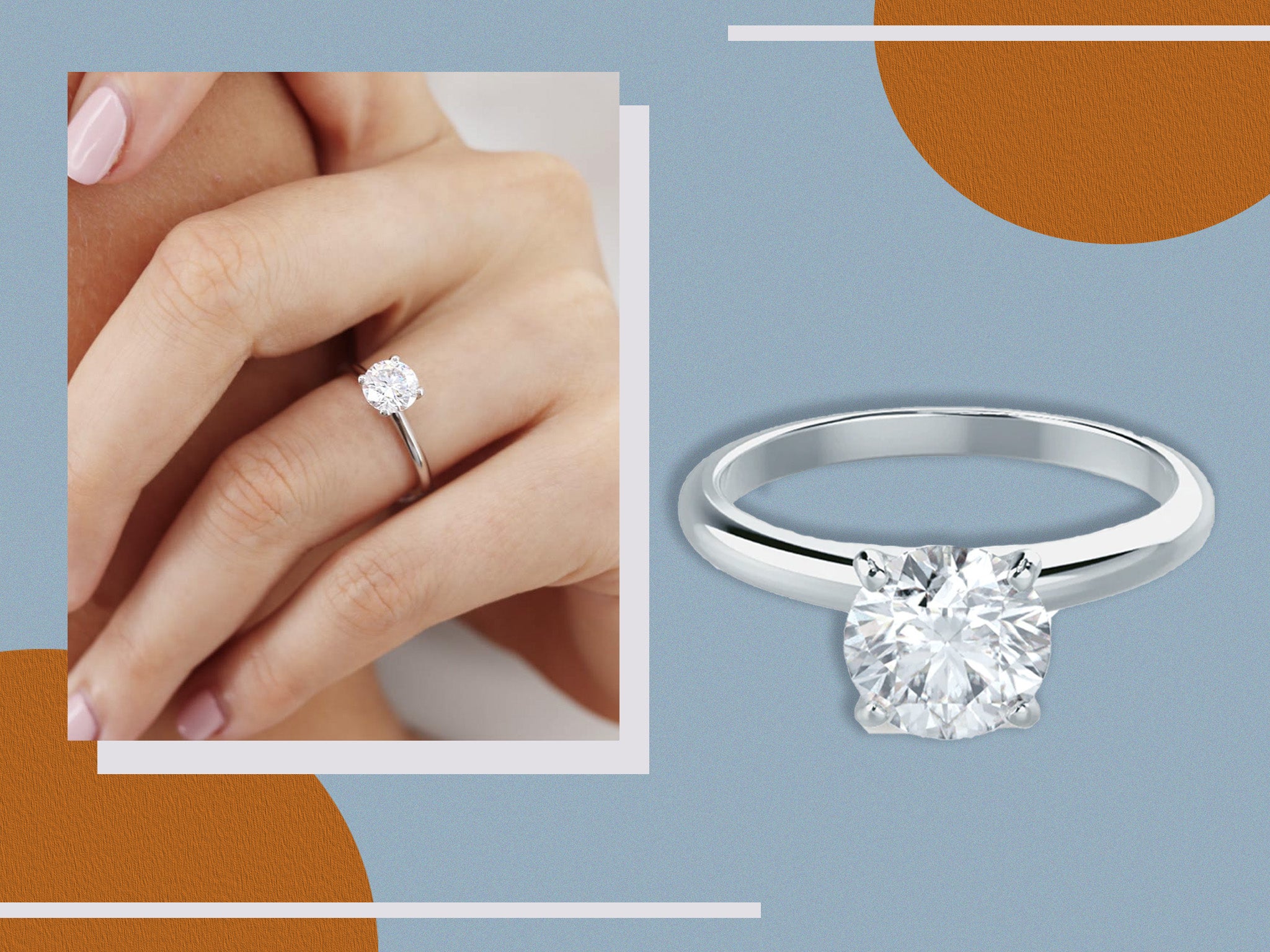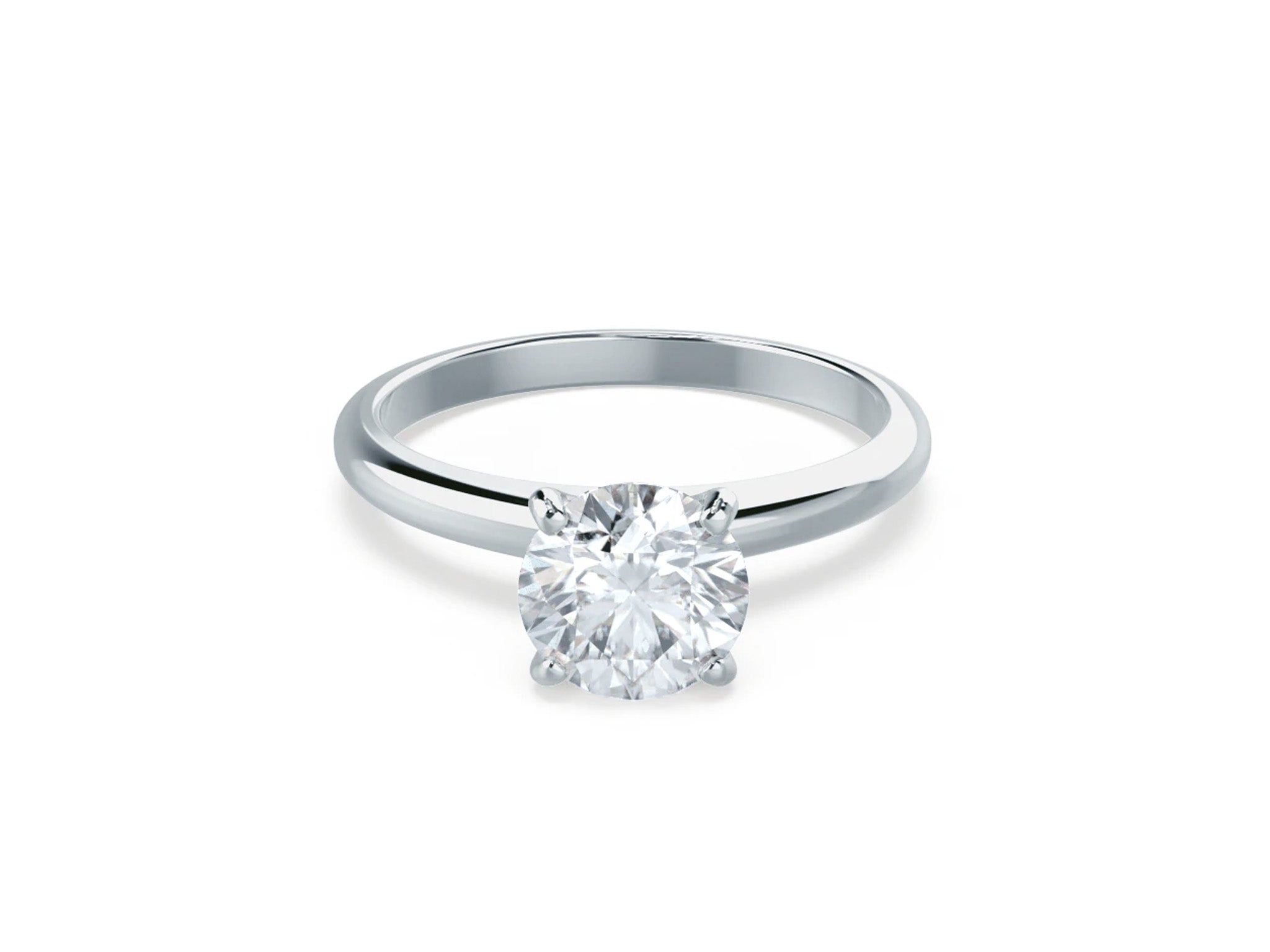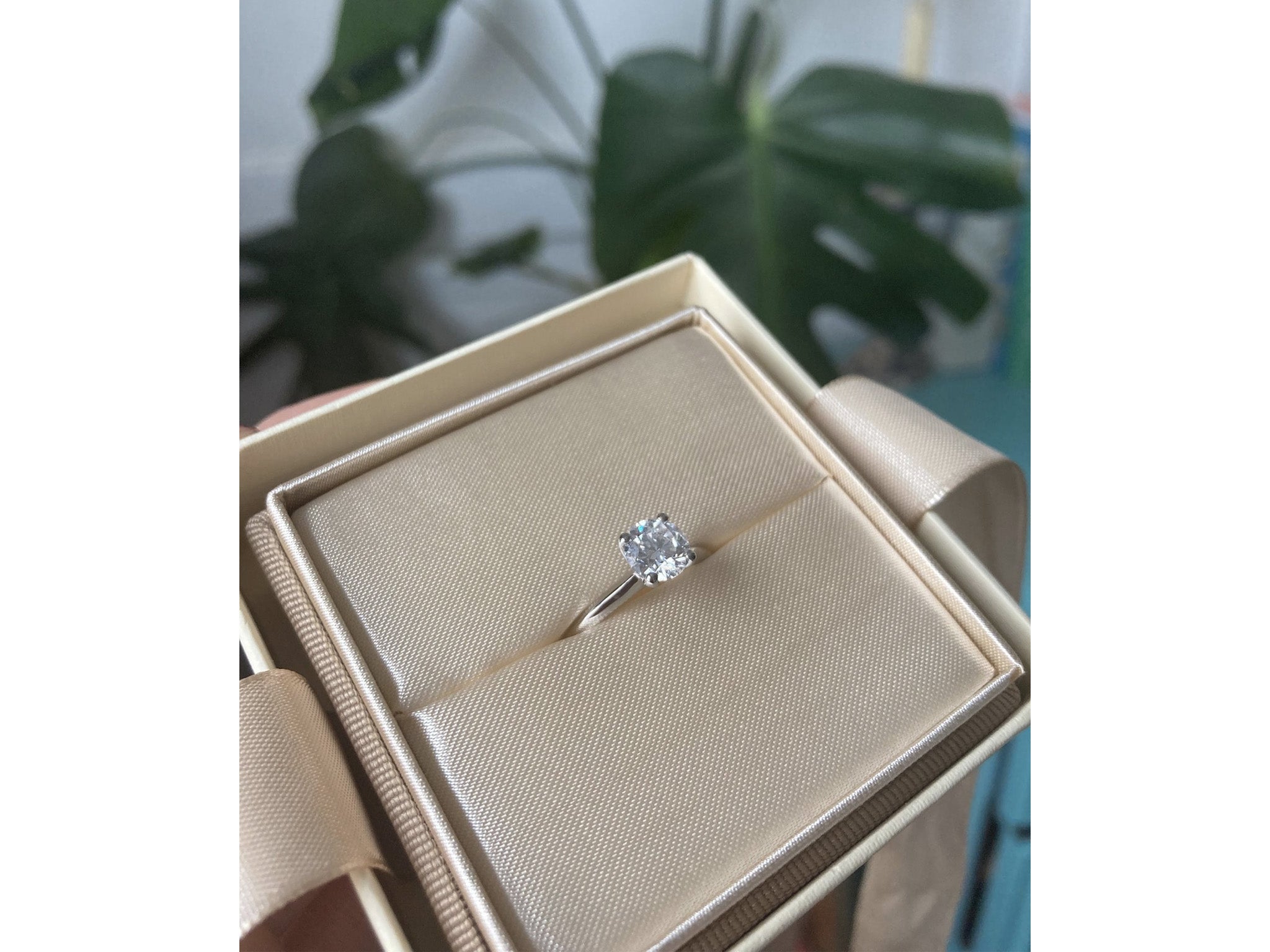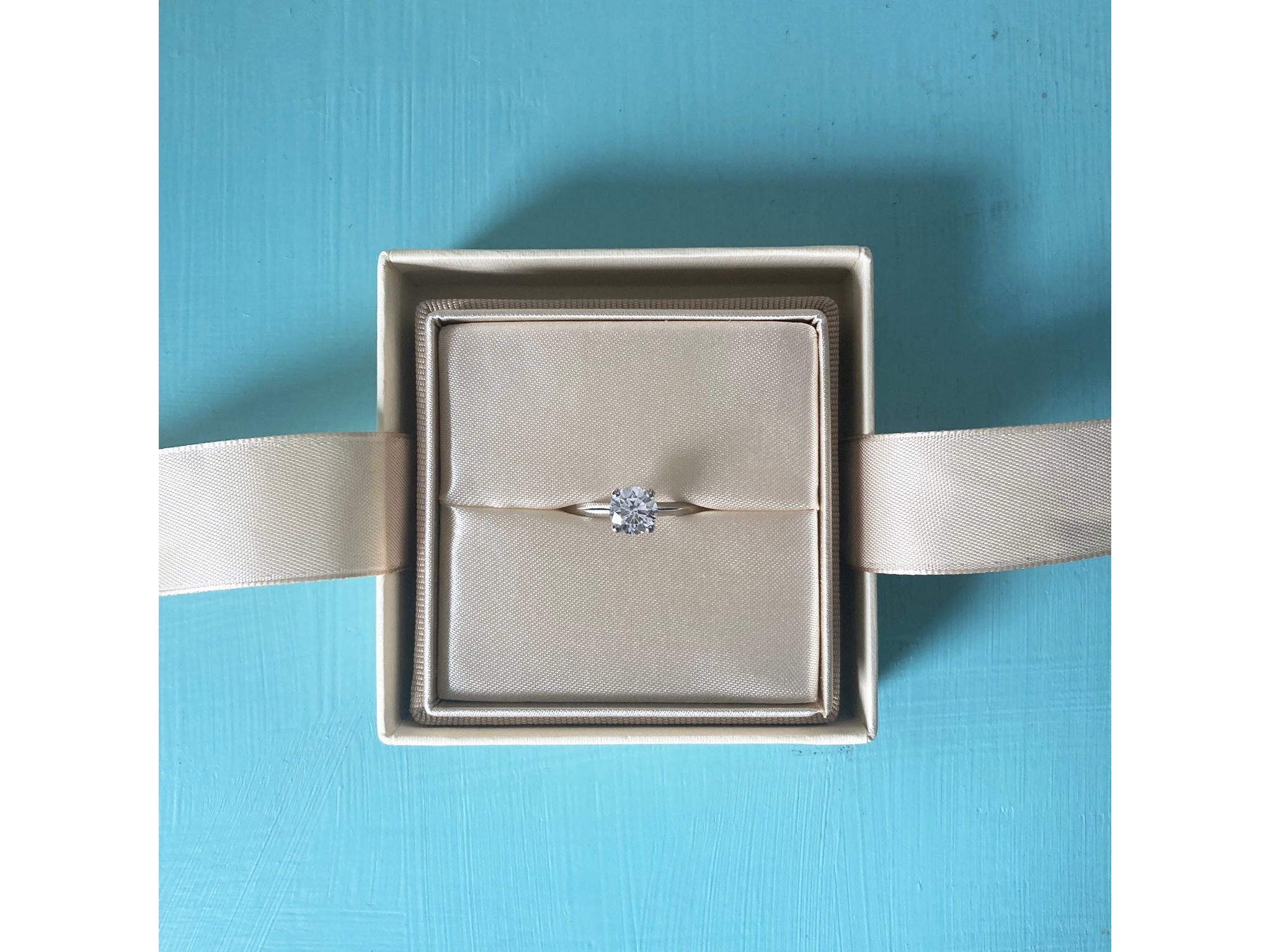The Independent's journalism is supported by our readers. When you purchase through links on our site, we may earn commission. Why trust us?
We tried Lily Arkwright’s diamond ring to see if lab-grown gems are a girl’s new best friend
More and more millennials are opting for these sustainable and ethical alternatives

Ever since the jeweller De Beers coined the slogan “a diamond is forever” in 1947, the gemstone has been a bonafide symbol of status, wealth, romance and aspiration. But with the rise of more ethically sourced and affordable gems, are lab-grown diamonds a girl’s new best friend?
Firstly, some context. Many argue that mining for diamonds not only involves the destruction of environments and ecosystems (from rerouting rivers to disturbing air quality), but also causes the displacement of people, as well as social impacts on local communities that can even lead to armed conflict.
This of course paints a bad picture and lab-grown options have increasingly come to the forefront as more sustainable alternatives in recent years. This movement gained further momentum globally when jewellery heavyweights Pandora and De Beers began opting for cultured gems in their collections, while homegrown Monica Vinader and Lark & Barry have garnered a cult following thanks to its innovative laboratory technology.
Leading the way in the UK for socially responsible engagement rings, Manchester-based online jeweller Lily Arkwright produces lab-grown and moissanite diamonds that promise to rival the real deal. As well as specialising in moissanite gems (a sparkly and colourless lab-grown gem that’s cheaper than diamonds), the brand are famed for its cultured diamond engagement rings that can cost anywhere between £730-£4,500.
With millennials and Gen Z combined being the main purchasers of diamonds for engagement rings, as well as 70 per cent of the former group considering buying a lab-grown alternative, it’s clear that the jewellery industry is heading toward the lab-grown direction. Naturally, we wanted to try a gem for ourselves.
How we tested
To see how a lab-grown diamond compares to the mined alternative, we considered the characteristics of Lily Arkwright’s Grace diamond platinum solitaire 1 carat ring – looking for shimmer, refraction and crystalisation that rivals the real stone. We also considered the process to make the ring, its cost and predicted longevity. Diamonds may be forever, but what about the gems grown in labs?
Lily Arkwright Grace lab diamond platinum solitaire ring: £2,369, Lilyarkwright.com

Rating: 9/10
- Carat weight: 1
- Colour: D
- Metal: 950 platinum
The look
A solitaire diamond is one of the most classic and popular choices for an engagement ring – and for good reason. The style features just one diamond with no other gemstones distracting from the centrepiece. This emphasis on the gem creates a striking and sparkling effect, with Lily Awkwright’s Grace ring embodying the minimalism of solitaire rings.
Since the stone takes centre stage in these simple styles, the diamond and its setting is all-important. In Lily Arkwright’s design, the 1 carat cultured diamond is showcased in a platinum four-prong mount that allows for maximum light to enter the centre stone. This effect increases the lab-grown diamond’s sparkle.

Now, onto the diamond itself. Lily Arkwright promise that all its lab grown diamonds are both chemically and aesthetically identical to its mined counterpart. Cementing this, its stones are fully certified and verified by the International Gemological Institure (IGI).
To the untrained eye, this lab-grown diamond does possess all the characteristics of a mined stone. The crystalisation is delicate and dazzling, refraction from every angle is excellent and the sign of a beautifully cut real diamond, every facet makes use of the natural light, revealing bright flashes of colour as you turn the gem.
The process
The key to making realistic cultured diamonds is “growing” them in controlled conditions that imitate the growing process of a mined diamond. In the lab, the combination of extreme pressure and heat is designed to replicate the bowels of the Earth.

Using some of these most advanced laboratory methods, Lily Arkwright’s cultured diamonds are constructed of actual carbon atoms that are arranged in the same characteristic diamond crystal structures as natural diamonds – explaining why they have the same refractive and colourful angles. This replicated process helps create the same cut, colour, clarity and carat weight as the real stone. And as lab-grown rings are chemically identical to natural diamonds, they too are made to contain the properties that help them last forever.
The cost
Beyond their ethical and sustainable advantages, lab-grown alternatives are also markedly cheaper than mined stones. A real diamond alternative to Lily Arkwright’s 1 carat lab-grown ring tends to cost upwards of £5,500. Take for example Samara James’ near-identical Olivia solitaire 1 carat diamond ring (£5,892.90, Samarajames.com) that’s more than double the price of the lab-grown substitute.
As the efficiency of lab diamond production continues to grow, the cultured alternative becomes more and more cost-effective. At the moment, lab-grown diamonds can cost anywhere between 40-60 per cent less than natural diamonds which necessitate costly mining extraction.
The verdict: Lily Arkwright Grace lab diamond platinum solitaire ring, 1 carat
Those who wish to opt for a more sustainable, ethical and affordable engagement ring that retains all the signatures of a traditional diamond, a lab-grown alternative like Lily Arkwright’s solitaire ring is a more than worthy alternative. The fine jeweller’s design is not only timeless and classic, but it’s near-impossible to tell the difference between its man-made centrestone and the real deal. While it is of course easy it is to be lured to the natural stone and all that they represent, Lily Arkwright’s Grace ring is perfect for embracing the burgeoning future of diamonds.
For more lab-grown alternatives, we’ve picked out our favourites from Pandora’s brilliance collection in our review
